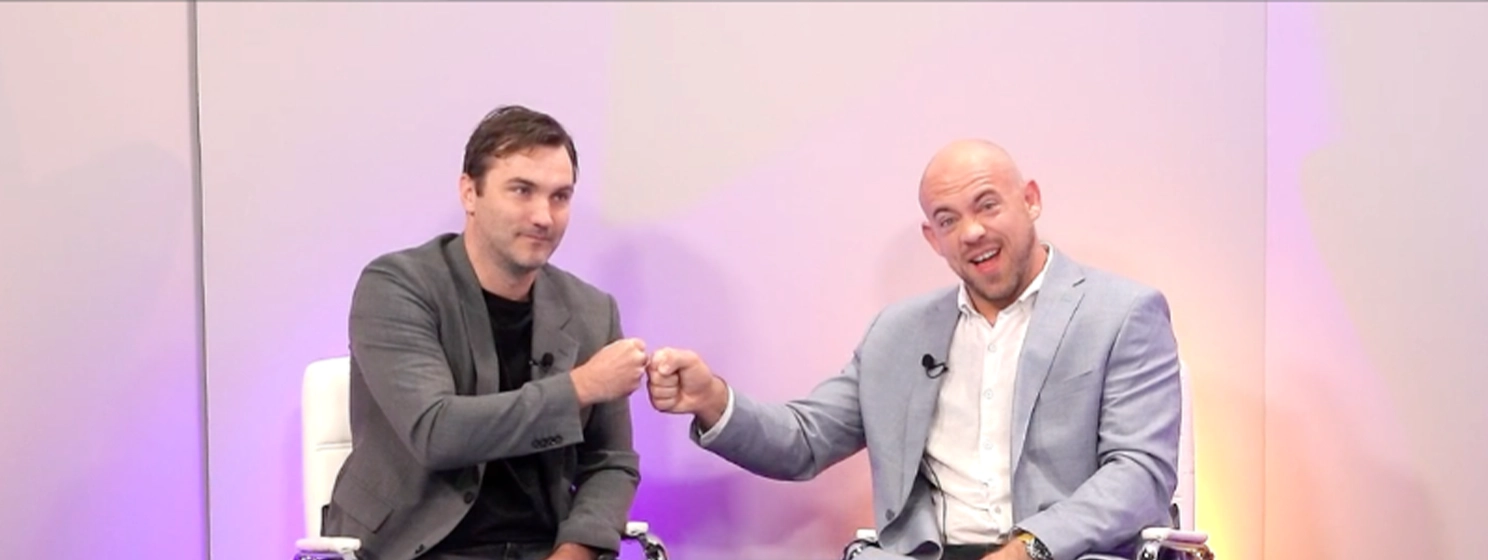|
Getting your Trinity Audio player ready...
|
Create something that’s provably yours, forever. Use it to build a career. The Bitcoin Corporation, starting with the Bitcoin App Suite, is taking shape as a rock-solid foundation for content producers. Whether your interest is writing, music/audio, video, business, dog-walking, or coffee, if Richard Boase (he prefers “@b0ase”) has his way, there’ll be a bApp for everybody and everything. Coming soon will be bOS (BitcoinOS) and bEx (an exchange). It’s all possible thanks to the mind-blowing new features of massively scalable, immutable, fast, and affordable blockchain.
- Introducing ‘Bitcoin Corporation’
- The features of bApp
- Bitcoin Writer to demonstrate everything else
- Implementation is top priority
- Bitcoin Corporation’s equity model
A million on-chain transactions per second sounds like science fiction to anyone who’s ever used a blockchain network before. Then, how about a billion? More? The “Teranode Era” for the BSV network is arriving now. It isn’t just a better blockchain. It’s a whole paradigm-shifting upgrade that should change the way we think about blockchain, and how it can create a whole new economy.
It’s too easy to be amazed at the speed and stats, and mutter vague platitudes about “paradigm shifts” without thinking about how, exactly, it’s all supposed to work. What should this new economy look and feel like to the average user?
The “how” part requires a few things. One is simply getting regular people to wrap their heads around concepts like a high-speed, auditable, permanent truth ledger for data, or provable content ownership, and why they need them. Another is creating platforms where BSV/Teranode’s features and services are utilized to their fullest potential. Once you’ve done that, there are still legacy legal regulations (for good reason) that must be followed, and structuring the new platforms in a way that satisfies them. You can decide which of those challenges is trickiest.
Founder and CEO @b0ase has set himself the modest goal of tackling all of them. His Bitcoin Corporation plan, starting with the Bitcoin App Suite, aims to be a hub for content producers—and anyone else with ideas on how to use the scalable blockchain‘s feature set to create real, work-based, prosperity. Right out of the gate, he is, literally, the “CEO of Bitcoin.”
CoinGeek sat down for a lengthy chat with Bitcoin Corporation CEO @b0ase to find out how serious all this is. And the answer is, a lot more serious than he lets on.
Why build this extensive suite now? Simple: Teranode architecture makes all this possible, with a million transactions per second as standard. We are entering the world of “bitcoin ubiquity,” where if an app isn’t baked into the blockchain by default, it just doesn’t exist.
@b0ase is sanguine. He admits it’s a thought experiment with a business plan to fill an obvious gap in the market. “dApps belong to crypto,” he says. “DEXs the same.” In Bitcoin, we have bApps and bEx’s; we distinguish ourselves from the crypto crowd by actually creating normal apps on chain for normal people—real people with real businesses, not speculative tokens in an endless laundromat of memecoins and rugpulls. bApps will make people’s lives better, just like apps made people’s lives better when the Apple II (NASDAQ: AAPL) arrived on the scene. Bitcoin Corp is Atlas, and it’s shrugging.”
bCorp’s two main products are the Bitcoin Operating System and the bApps store. What are bApps? Why Bitcoin Apps of course! Starting with the Bitcoin App Suite, @b0ase is reinventing the Bitcoin industry from the ground up. “No more ‘dApps’,” he says, “they’re bApps now.”
There are features for creative content, such as Bitcoin Writer, Bitcoin Music, and productivity bApps, including Bitcoin Spreadsheet, Bitcoin Drive, and Bitcoin Calendar.
Beyond that, there’s the tokenized equity/dividend structure of the Bitcoin Corporation itself, as well as the working prototype of “Bitcoin OS” for running bApps. There are useful tools, such as Bitcoin Jobs, to find employment, as well as more common tools you’d expect to find, including a wallet, trading exchange, and email.
The Bitcoin App Suite is live in proof-of-concept form for everyone to explore, with new features arriving as soon as @b0ase can publish them. They are appearing faster than you’d expect—as a Bitcoiner since the very early days, he’s dedicated a lot of his time and effort (some might say too much) over the past 16 years towards answering the question: What is blockchain actually for? Now it’s time to implement and demonstrate.
“It’s a big vision,” says @b0ase. The question is, can he pull it off?
“It all depends on whether I can get funding,” he said. “I’d be quite content to work on Ninja Punk Girls for fun and create games and entertainment stuff, but I’m intrigued by the idea of the bOS, an operating system based on Bitcoin payments that buys in resources from a globally distributed computing network of providers, I think it could compete with Apple and Google if done correctly, easily.”
Bitcoin Writer as a demonstration for everything else
@b0ase says he started with Bitcoin Writer due to frustration with reading a certain inventor’s work on Substack. “It frustrated me that he was not publishing to Substack directly from the blockchain using OAuth; until I discovered, in the process of building Writer, that Substack doesn’t support OAuth. Guess we’ll just have to rebuild OAuth and Substack, right”? And thus the idea of the bApps store was born.
Current collaborative writing apps are feature-rich and popular, but when it comes to providing hard proof of who created what, and when, they lack blockchain’s auditable provenance.
Bitcoin Writer is a GitHub-style version control record, with the added value of on-chain proof. Not only can it track changes and sources, but it also provides a definitive origin (or “genesis”) point where a project went from being a blank page to a completed work.@b0ase explained how the blockchain concept of recursive hashing (or rolling hash) achieves this as the creator saves the latest version of their work on chain.
“If you’re putting a hash of your work into the hash, when you’re hashing it over and over again, that is a classic piece of recursion. If you’re doing recursive hashing that starts with you, at zero, when you’ve got an empty document (‘at genesis’), and that ends in a full product where you’ve done recursive hashing all the way to that full product, you can prove all the way back to genesis that it was your work. “
This process would also allow a creator to identify where they’ve used generative AI content, what the query was, and any edits they made to the AI’s output. Should anyone in the future (e.g., an employer or awards panel) query the originality of the work, the creator has an auditable log to demonstrate it at a granular level. The blockchain is public, but the content is encrypted, so a creator can select who sees the proof.
This is a powerful tool for content creators in a digital world where copying is easy and is becoming ever more prevalent. The proliferation of generative AI content is also creating the new problem of inadvertent plagiarism—the copier thinks they’re using the gen-AI’s output, but the AI itself constructed it from original human sources. When a content creator identifies portions of their own output in someone else’s project, naturally, they’d like to be compensated for that. There have already been cases involving journalists, researchers, scriptwriters, and book writers.
“If you take that (recursive hashing) and extend it not just for written documents, but to any work product, you’ve got a very robust system for protecting you, your work, your intellectual property, all your output. With commodification of that output, you can compare it to other people’s work and say ‘look, that’s where they copied me, and that’s where they owe me royalties, or whatever.”
In the future, a royalty payout system could be automated so that gen-AI users could see blocks of origin-identifiable content highlighted, and the system would determine what’s owed (and to whom). It’s a lot simpler and cheaper than fighting lawsuits.
Blocks of text are probably a good starting point to demonstrate such a system, but there’s no reason it couldn’t ultimately be extended to any content format—video, audio, music, and visual. That’s the beauty and power of a million-plus transaction-per-second blockchain, particularly if it’s indexed well enough to identify specific information quickly.
Implementation matters
However, @b0ase noted, “Implementation does matter.”
Blockchain engineers have built scalable networks, such as BSV, with impressive capabilities. These come with numerous promises about how they’ll transform the world and create a robust digital economy that benefits everyone. But answering the “how?” part is tricky until someone builds the tools humans will use to interface with the network.
“People in Bitcoin will go on and on about data sovereignty, and about how you own your own data, as if it’s a panacea—with no reference whatsoever as to how the process actually works, how to implement this, and how to profit from it.”
“That’s ultimately why a writer writes, or a video editor edits—it’s to make money, the creative work product, and selling it. And it’s not just about micropayments. Micropayments facilitate it, they’re ultra-important, and the cheaper the payment the better. But it’s like, how? How are you going to do this?”
“Commodifying the work is important, work trees are important, recursive hashing is important. And securitization is also important… but that’s where it gets really controversial.”
“Securitization” in this context refers to issuing shares in your work product or brand and selling the future dividends generated by the revenue your work produces.
That kind of securitization isn’t part of the Bitcoin App Suite… yet. But the idea is baked in there for when it can be. Selling “shares” in yourself, your career, or your creative work is another one of those things we’re told blockchain and the digital economy will make possible. Technologically, it is possible, but again, it’s the implementation that matters. And when it comes to selling securities, good implementation depends significantly on human technologies—the kind overseen by the Securities and Exchange Commission (SEC) and Commodity Futures Trading Commission (CFTC), as well as their international equivalents. This also makes building the right structures significantly more complex than simply coding them into existence.
“If you really think about it, people don’t want ‘blockchain’ and for the most part they don’t want Bitcoin either. What they want is wealth, convenience, and comfort. If bApps can make life better for people, they’ll use them. If not, sayonara.”
Bitcoin Corporation’s equity model and how to approach it
The current idea for Bitcoin Corporation and the Bitcoin App Suite, @b0ase said, would be to distribute tokens in return for the amount of work users do on the platform. If you create music for Bitcoin Music, you’d receive $bMusic tokens. Publishing finished Bitcoin Writer docs would get you a different token, and so on. Bitcoin Corporation isn’t selling these tokens, but users who earn them could conceivably trade them, and they would be a form of equity in the company, in return for work. This would incentivize users to create more content to increase the overall value of the platform.
That aspect makes the Bitcoin Corporation harder to pitch to investors, thanks to the speculative wild west of NFTs, ICOs, and other digital assets over the past 16 years. As soon as you say “token,” everyone thinks it’s another fundraising scheme, whereas @b0ase’s plan is to create a different kind of value model that’s centered on creative work.
On the upside, rewiring everyone’s brains to accept the idea of a new-style, blockchain-based economy might just be a matter of time. Careers like “digital content creator,” “livestreamer,” “crypto trader,” “social media influencer,” and even “web developer,” would’ve sounded alien to someone 35 years ago. Twenty-five years ago, experts still scoffed at the idea of all-digital music and video distribution. Ten years ago, no one was having meaningful conversations with AI chatbots. Yet all these things are commonplace in 2025.
Are the Bitcoin Corporation and Bitcoin App Suite just ahead of their time? Maybe, but only by a little. And time itself seems to be speeding up. When all around is in flux, maybe it’s the perfect time to do this.
Watch: Bitcoin Developer Mike Hearn talks Micropayment Integration with HTTP

 12-22-2025
12-22-2025 




